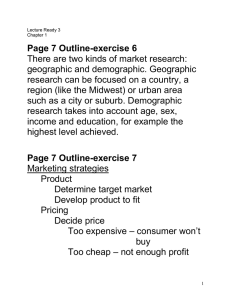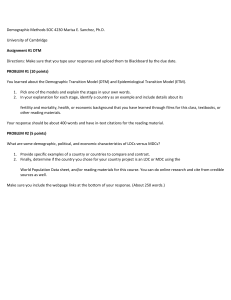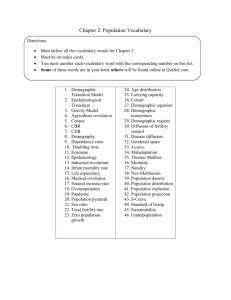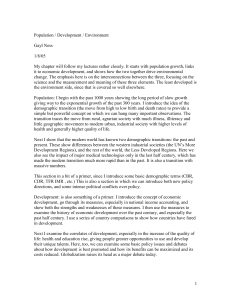January 25 - Nora P. Reilly, Ph.D.
advertisement
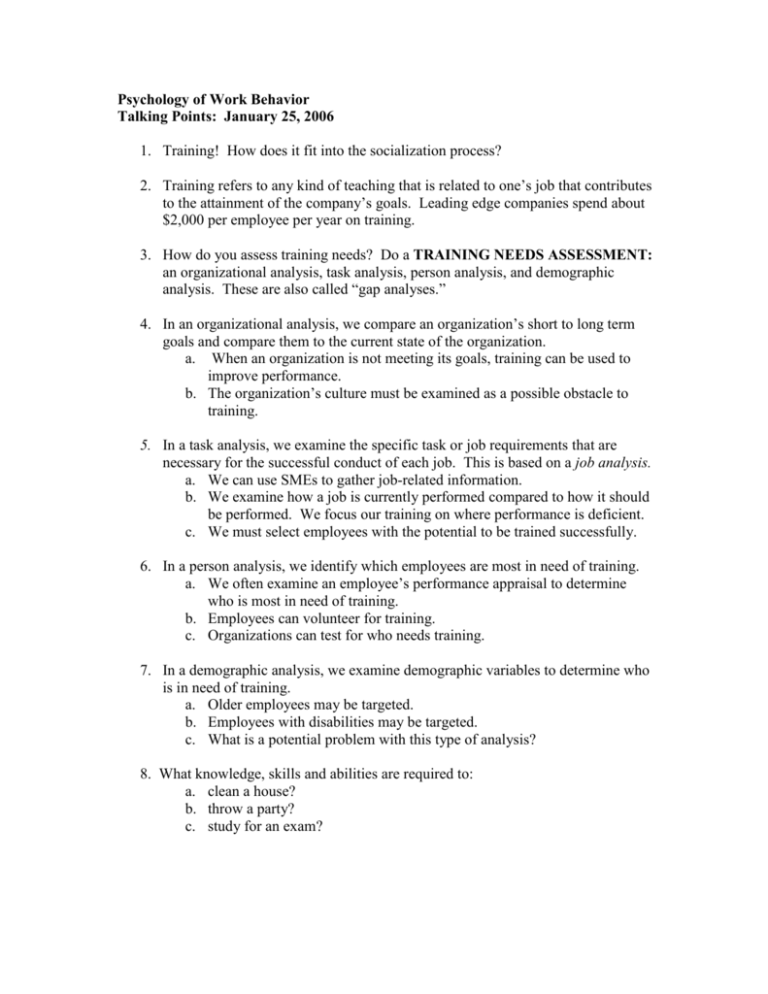
Psychology of Work Behavior Talking Points: January 25, 2006 1. Training! How does it fit into the socialization process? 2. Training refers to any kind of teaching that is related to one’s job that contributes to the attainment of the company’s goals. Leading edge companies spend about $2,000 per employee per year on training. 3. How do you assess training needs? Do a TRAINING NEEDS ASSESSMENT: an organizational analysis, task analysis, person analysis, and demographic analysis. These are also called “gap analyses.” 4. In an organizational analysis, we compare an organization’s short to long term goals and compare them to the current state of the organization. a. When an organization is not meeting its goals, training can be used to improve performance. b. The organization’s culture must be examined as a possible obstacle to training. 5. In a task analysis, we examine the specific task or job requirements that are necessary for the successful conduct of each job. This is based on a job analysis. a. We can use SMEs to gather job-related information. b. We examine how a job is currently performed compared to how it should be performed. We focus our training on where performance is deficient. c. We must select employees with the potential to be trained successfully. 6. In a person analysis, we identify which employees are most in need of training. a. We often examine an employee’s performance appraisal to determine who is most in need of training. b. Employees can volunteer for training. c. Organizations can test for who needs training. 7. In a demographic analysis, we examine demographic variables to determine who is in need of training. a. Older employees may be targeted. b. Employees with disabilities may be targeted. c. What is a potential problem with this type of analysis? 8. What knowledge, skills and abilities are required to: a. clean a house? b. throw a party? c. study for an exam?

